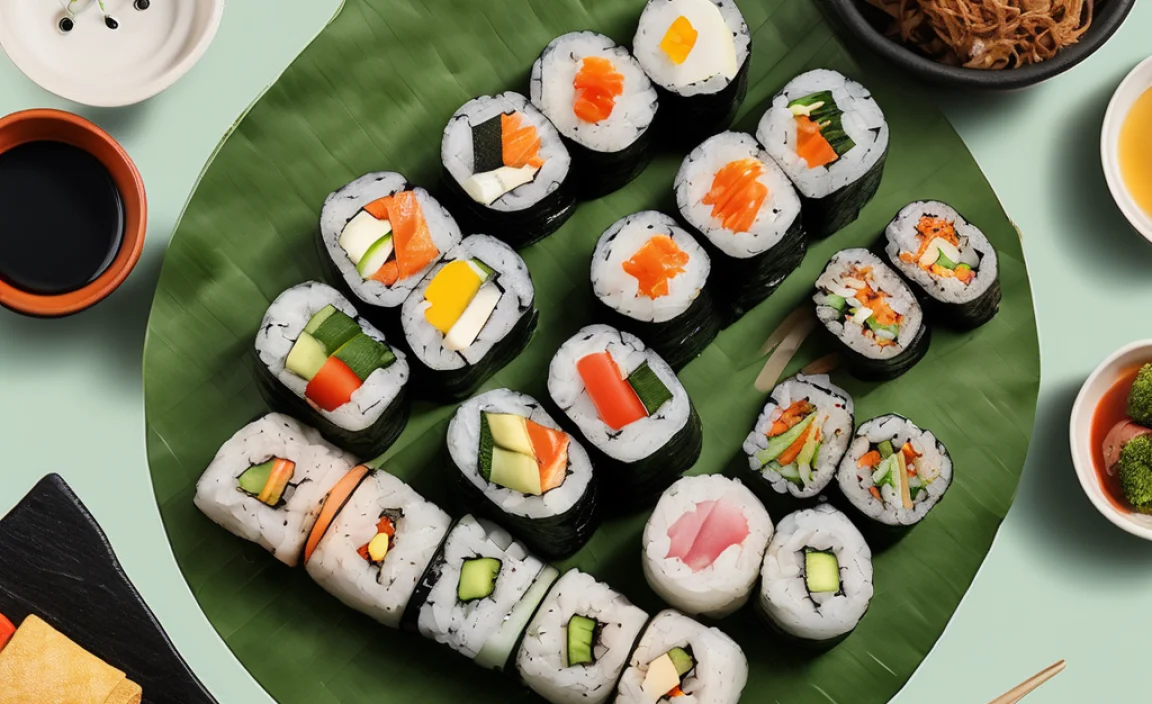Yes, you can develop a taste for Icelandic fermented shark, known as Hákarl. While its notoriously strong ammonia scent and unique texture can be challenging, understanding the traditional preparation, pairing it with the right accompaniments, and approaching it with an adventurous spirit can lead to a surprisingly rewarding culinary experience. Don’t let the reputation scare you; with the right tips, you can conquer Hákarl!
Ever heard of a delicacy that smells like ammonia and tastes… unlike anything else? That’s Icelandic fermented shark, or Hákarl, for many! It’s a true rite of passage for adventurous eaters visiting Iceland, and honestly, its reputation can be pretty intimidating. Many wonder if it’s even possible to enjoy something so notoriously pungent. But don’t worry! This guide is here to demystify Hákarl. We’ll break down what makes it unique, how it’s traditionally prepared, and most importantly, how you can approach this iconic Icelandic dish to actually appreciate its “proven taste.” Get ready to explore a fascinating part of Icelandic food culture!
What Exactly is Icelandic Fermented Shark?
Icelandic fermented shark, affectionately known as Hákarl, is not your average seafood. It’s a national dish of Iceland, made from the Greenland shark or other small sharks. The catch? These sharks are poisonous when fresh due to high levels of urea and trimethylamine oxide. So, how do Icelanders make it edible and even a celebrated treat?
The secret lies in a unique, centuries-old preservation process. The shark meat is buried in a shallow pit and covered with sand and stones. This process ferments the meat for a period of 6–12 weeks, allowing it to develop its characteristic pungent smell and firm texture. After fermentation, the meat is hung to dry for several more months. This drying process is crucial for removing moisture and further curing the shark, making it safe and, for many, a unique delicacy.
The result is small, chewy cubes of shark meat with a very strong, ammonia-rich aroma. It’s often described as having a “fishy” flavor that’s intensely concentrated, with a lingering aftertaste. While it might sound daunting, it’s a taste of history and tradition that has sustained Icelanders for generations, especially during the harsh winter months.
The “Proven Taste”: Understanding Hákarl’s Flavor Profile
Let’s talk about the elephant in the room: the taste. “Proven taste” might sound like a strong claim for something so polarizing, but it refers to the fact that many Icelanders and adventurous visitors genuinely enjoy it, and have for centuries. It’s not about finding it conventionally delicious like a piece of sushi; it’s about appreciating its complex, acquired flavors and the cultural significance it holds.
The flavor of Hákarl is a direct result of its fermentation. Here’s what you can expect:
- Ammonia Scent: This is the most striking characteristic. The fermentation process breaks down compounds in the shark’s flesh, releasing ammonia. It’s strong, pungent, and often compared to cleaning fluid.
- Chewy Texture: After months of fermentation and drying, Hákarl becomes firm and somewhat rubbery. It requires a good chew.
- Intense Flavor: Beyond the ammonia, there’s a deeply savory, fishy taste. It’s not a light, flaky fish flavor; it’s robust and concentrated, with a surprising sweetness that emerges for some.
- Lingering Aftertaste: The flavor tends to stay with you, which is why pairing it correctly is so important.
The “proven taste” isn’t about universal love at first bite. It’s about the historical acceptance and occasional enjoyment of this unique food. It’s a flavor built on necessity and tradition, now celebrated as a cultural icon. Think of it like appreciating a very strong cheese or a complex wine – it’s an acquired taste that rewards patience and an open mind.
The Traditional Preparation Process: From Shark to Table
The meticulous and lengthy preparation process is what transforms the toxic Greenland shark into a safe and edible food. This isn’t a quick recipe; it’s a tradition passed down through generations, showcasing the ingenuity of survival in Iceland’s challenging environment. The process essentially relies on two key stages: fermentation and drying.
Stage 1: Fermentation (The Burial)
This is arguably the most critical and intriguing part of the Hákarl preparation. It’s where the magic (and the smell!) happens.
- Catching the Shark: Traditionally, Greenland sharks are caught using specialized fishing gear.
- Processing the Shark: The shark is gutted and its head is removed. The body is then cut into pieces.
- The Burial: The shark pieces are placed into a specially dug pit in the ground.
- Covering and Weighting: The shark is covered with sand and small stones. Larger, heavier stones are placed on top to press down the meat, squeezing out its fluids. This pressure is essential for the fermentation process.
- Fermentation Time: The shark remains buried for a period ranging from 6 weeks to 3 months, depending on the season and local custom. The harsh Icelandic environment, with its cool temperatures, aids in slow, controlled fermentation.
- Ammonia Release: During this time, natural enzymes and bacteria break down the toxic compounds, particularly the urea, into less harmful substances, notably ammonia. This is what gives Hákarl its distinct, powerful scent.
Stage 2: Drying (The Curing)
Once the fermentation is complete, the shark meat is removed from the pit. It’s still not ready to eat; it needs to be cured to remove excess moisture and to further mellow its flavor.
- Washing: The fermented shark pieces are thoroughly washed to remove the remaining sand and fluids.
- Hanging: The pieces are then hung up to dry on wooden racks or beams, typically under shelter to protect them from the elements but allow for airflow.
- Drying Time: This drying process can take anywhere from 4 to 12 weeks, sometimes longer. The meat hardens, losing up to half its weight and developing a firm, chewy consistency.
- Final Product: The resulting Hákarl is now ready for consumption, albeit still with its formidable aroma and flavor.
This traditional method highlights the resourcefulness of Icelandic culture, turning what would be poisonous into a food source. Understanding this deep-rooted process is key to appreciating the Hákarl experience.
The Sensory Experience: What to Expect When Trying Hákarl
Let’s be honest, approaching Hákarl for the first time can feel like gearing up for a culinary dare. The anticipation starts long before the first bite, often fueled by tales of its overwhelming smell. Here’s a breakdown of what your senses might encounter:
Sight
Hákarl is typically served in small, translucent cubes. The color can range from pale yellow to off-white, depending on how long it was fermented and dried. It doesn’t look particularly appetizing to the uninitiated – it’s a bit gelatinous and glistening, not unlike aged cheese or very firm jelly.
Smell
This is where Hákarl truly makes its presence known. The most dominant aroma is ammonia. It’s sharp and potent, capable of making your eyes water if you get too close. Undertones of fishiness are also present, but they are often overshadowed by the ammonia. Many describe it as smelling like a strong cleaning product or pungent cheese. It’s best to take a deep breath before getting too close, or preferably, breathe through your mouth!
Texture
When you finally put a piece in your mouth, the texture is quite unique. It’s dense, firm, and chewy. It doesn’t break apart easily like most fish. You’ll need to chew thoroughly to break it down. It has a slightly rubbery, gelatinous feel, similar to very firm gummy candy or well-aged, firm cheese.
Taste
The taste is where things get surprisingly complex, and often, less intimidating than the smell suggests. The initial flavor is intensely fishy, but not in a fresh, oceanic way. It’s a concentrated, savory, and slightly nutty taste. The ammonia is present but often dissipates quickly once you start chewing. For some, a subtle sweetness emerges, which helps to balance the intensity. The aftertaste is long and can be quite pronounced, which is why the traditional accompaniments are so important.
It’s important to approach Hákarl with an open mind. Don’t focus on the smell; try to appreciate the different elements of taste and texture. It’s an experience that engages all your senses, and for some, it becomes a fascinatingly addictive flavor profile.
How to Eat Hákarl: The Essential Pairings and Tips
Eating Hákarl isn’t just about the shark itself; it’s about the ritual and the accompanying flavors designed to make the experience enjoyable. The potent smell and taste mean that you need strategic partners to help cleanse your palate and enhance the experience. Think of these as your Hákarl survival kit!
The Classic Accompaniments
These are the traditional partners that have been used for centuries to complement and contrast the unique flavors of Hákarl.
- Brennivín (Black Death): This is non-negotiable for the full Hákarl experience. Brennivín is Iceland’s signature schnapps, a caraway-flavored spirit. The strong, herbal kick of Brennivín is the perfect palate cleanser and a powerful antidote to the ammonia and fishiness of the shark. It’s often said that you should chase a piece of Hákarl with a shot of Brennivín.
- Rye Bread (Rúgbrauð): Dense, slightly sweet Icelandic rye bread is another fantastic pairing. Its earthy, slightly malty flavor provides a comforting contrast to the sharp taste of the shark. It also offers a solid base for the chewy Hákarl.
- Water: Simple, pure Icelandic water is always welcome to help wash down the strong flavors.
Tips for Your First Hákarl Adventure
Whether you’re in Iceland or trying it at a specialized restaurant elsewhere, here are some tips to make your first encounter with Hákarl a success:
- Take a Small Bite First: Don’t go for a huge piece right away. Start with a small cube to gauge your reaction.
- Smell It (But Not Too Much!): Take a gentle sniff to prepare yourself, but don’t linger. The intensity of the smell can be more off-putting than the taste.
- Chew Thoroughly: Don’t try to swallow it whole. Chewing helps break down the texture and allows the flavors to develop and then be balanced by your drink.
- Pair it with Brennivín: This is crucial! The spirit is designed to cut through the strong flavors and cleanse your palate. It’s not just a drink; it’s part of the purification process.
- Have Rye Bread Ready: The slightly sweet bread helps to absorb some of the intensity and provides a different textural element.
- Breathe Through Your Mouth: For the initial taste, breathing through your mouth can help minimize the impact of the ammonia smell.
- Don’t Overthink It: Approach it with curiosity and a sense of adventure rather than dread. It’s a unique cultural experience!
- Know Where to Find It: Hákarl is most commonly found during the Þorrablót midwinter festival in Iceland (January/February), but it’s often available year-round in traditional restaurants and markets, especially in Reykjavik. Many tourist-oriented restaurants offer it specifically for adventurous visitors.
The key to enjoying Hákarl is embracing the entire experience – the smell, the texture, the taste, and the tradition. With the right pairings and a brave spirit, you can truly appreciate this iconic Icelandic dish.
Where to Try Authentic Icelandic Fermented Shark
If you’re planning a trip to Iceland or are a culinary explorer looking for your next challenge, tasting authentic Hákarl is a must-do. While it’s a traditional food, it’s become a popular item for tourists seeking a genuine taste of Icelandic culture. Here’s where you’re most likely to find it:
In Iceland
During the winter months, particularly around the midwinter festival of Þorrablót (usually spanning January and February), Hákarl is plentiful and a central part of the celebrations. However, you can find it year-round in many places:
- Traditional Restaurants: Many restaurants in Reykjavik, especially those focusing on Icelandic cuisine, will offer Hákarl. Look for places that highlight traditional foods. Some well-known establishments that often serve it include:
- Íslenski barinn (The Icelandic Bar): Known for its extensive menu of Icelandic dishes and drinks, this is a popular spot for trying Hákarl.
- Fiskmarkaðurinn (The Fish Market): While more upscale, they sometimes feature Hákarl as a part of a tasting menu or special.
- Bæjarins Beztu Pylsur: While famous for hot dogs, some smaller food stalls or restaurants near markets might carry it during festival seasons.
- Local Markets and Food Halls: Places like Hlemmur Food Hall or local markets in larger towns might have vendors selling Hákarl, especially during Þorrablót.
- Duty-Free Shops: You can sometimes buy pre-packaged Hákarl at shops like Keflavík International Airport’s duty-free store, which makes for a unique souvenir for fellow adventurous foodies.
Outside of Iceland
Finding authentic Hákarl outside of Iceland can be significantly more challenging, as it requires specific preparation and local expertise. However, some specialized Nordic or Scandinavian restaurants in major international cities might offer it as a seasonal or novelty item. Your best bet is to:
- Search for Scandinavian Restaurants: Look for restaurants that focus on authentic Nordic cuisine, especially during periods like Þorrablót.
- Online Specialty Food Stores: Very rarely, you might find it from online retailers that import Icelandic or Nordic delicacies, though availability can be inconsistent and shipping costs high.
No matter where you find it, remember that the experience is as much about the cultural immersion as it is about the taste. When trying Hákarl, be sure to be respectful of the tradition and enjoy it with an adventurous spirit!
The Science Behind Fermented Shark
The seemingly arcane process of fermenting shark meat is actually rooted in fascinating biochemistry. As mentioned, the Greenland shark is a unique creature, adapted to the cold, deep waters of the North Atlantic. Its physiology presents a significant challenge for consumption, which the traditional fermentation process cleverly overcomes.
Urea and Neurological Toxicity
Greenland sharks, like other deep-sea cartilaginous fish, lack a functioning urinary tract. Instead, they excrete waste products, primarily urea and trimethylamine oxide (TMAO), directly into their tissues. This allows them to maintain a body fluid composition that is close to that of seawater, preventing them from becoming dehydrated in their high-pressure environment. However, these compounds are toxic to humans and can cause severe neurological symptoms, including paralysis and death, if consumed fresh.
The role of fermentation is to break down these harmful compounds. The low temperatures of the natural burial environment, combined with the action of naturally occurring bacteria, facilitate this process. Specifically:
- Urea Hydrolysis: Bacteria in the shark flesh convert urea into ammonia. While ammonia is what gives Hákarl its notorious smell and taste, it is less toxic than raw urea. The gradual release and saturation of ammonia throughout the flesh is key to making the shark digestible.
- TMAO Degradation: Trimethylamine oxide is also converted into trimethylamine (TMA) by microbial action. TMA is responsible for the strong, fishy odor associated with decaying fish but is also thought to be partially neutralized or masked by the ammonia produced.
The subsequent drying process further reduces the water content, inhibiting the growth of harmful spoilage bacteria and helping to preserve the meat.
Nutritional Value
Despite its challenging preparation, Hákarl is a good source of protein. The fermentation and drying processes concentrate the nutrients. Historically, Hákarl was an important source of sustenance, providing essential protein during long winters when fresh food was scarce. It’s also packed with vitamins and minerals, though the specific nutritional breakdown can vary based on the exact preparation methods.
For a deeper understanding of the chemistry involved in food preservation and fermentation, resources like the U.S. Food and Drug Administration’s Science and Research page offer insights into food safety and the scientific principles behind safe food handling, which all traditional preservation methods, including Hákarl, adhere to.
| Compound | Role in Shark | Effect of Fermentation | Resulting Sensation |
|---|---|---|---|
| Urea | Osmoregulation (prevents dehydration in seawater) | Hydrolyzed into ammonia by bacteria | Pungent aroma, contributes to “sharpness” of taste
|



